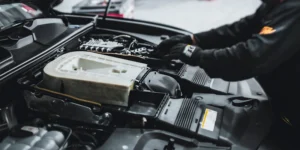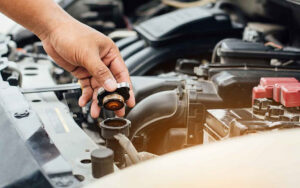Car engines are like the heart of your vehicle, constantly working hard to keep you moving forward. Proper care of these vital organs will extend its service life for years to come. Here are a few tips that will ensure a longer-running engine.
Air flow: air resistance saps engine power. That’s why some cars use polished intake manifolds and large air filters to improve airflow, and reduce resistance.
Check the Oil
Regular oil checks are one of the best ways to ensure that your car engine remains healthy. Oil keeps all moving parts lubricated so they don’t overheat, which could result in irreparable engine damage.
Before beginning your oil check, ensure your car is on level ground and off. Furthermore, allow some time after the last time you started up your car for its engine to cool off so as to not burn yourself on hot engine parts.
Once you’ve given yourself enough time, pop the hood and locate the dipstick. It should usually have a brightly-colored handle or an oil can symbol on it; when removed from its housing it should wipe any excess oil off with a clean, dry cloth before reinserting and viewing its readings; you want an oil streak between these two marks for best results.
If the oil level meets or exceeds its minimum mark, no additional oil needs to be added, however if it drops below this minimum threshold it is time to replenish it using the grade recommended in your vehicle’s owner’s manual and add a small amount at a time using your dipstick as a gauge to avoid overfilling your engine.
Check the Coolant
An engine in your car is more than a mere collection of metal and wires; it provides us with power on every journey we take. Caring for it properly will keep it running efficiently for years to come; simple steps you can take now could prevent expensive repairs down the line, such as scheduling regular fluid checks and refills.
An essential fluid to check regularly is engine coolant. This liquid safeguards against overheating, making it vitally important to keep at an appropriate level. In cold weather conditions it may also help protect against corrosion of your engine by adding antifreeze as part of its formula.
Before opening the radiator cap on your vehicle, it is a wise idea to wait until all its systems have had time to cool down completely. Coolant reservoirs and radiators are under considerable pressure due to its high boiling point; so opening it when your car is hot can lead to hot coolant pouring out like an angry geyser!
After waiting a short while, open the radiator cap and inspect your coolant levels. There should be minimum and maximum fill lines marked on your coolant reservoir; your coolant should fall between those marks. If not, top up until it does so. When switching types of coolants be sure to use exactly what your vehicle originally had as different kinds of coolants may not mix as efficiently.
Check the Spark Plugs
Spark plugs may be among the smallest components in your car’s engine, yet they play one of the most vital roles – lighting the cylinders with sparks to keep running efficiently. When worn-out or not firing correctly, your engine could start misfiring and losing power – potentially even leaving it running less efficiently than intended.
The easiest and safest way to inspect a spark plug is with either a simple spark plug tester, or by visually inspecting it. Once the engine is shut off and cool, disconnect its spark plug wire from its socket before connecting your spark plug tester in-line with both HT lead and spark plug socket and operating to see if any sparks form.
An ineffective spark plug will have an increased gap between its electrodes, rendering it less efficient at performing its task. Carbon build-up or detonation damage may also appear; detonation damage is often the result of running lower octane gas than recommended by your vehicle manufacturer and can usually be corrected with a tune up.
Spark plugs that aren’t working correctly may also be due to worn piston rings that need replacing, so replacing all your spark plugs may solve your problems. In any event, however, new spark plugs may provide the solution to any ongoing issues with your vehicle.
Check the Battery
An automobile engine is more than just an inanimate piece of metal; it provides power to you on journeys both nearby and far. Therefore, it makes sense to care for it properly, starting by regularly checking its condition – for instance by inspecting its battery.
This task can be completed relatively easily with the use of a multimeter and some basic tools you likely already possess in your garage or toolbox. First off, ensure your vehicle is off and remove its key from ignition; next use the multimeter set to DC voltage (indicated by solid lines with dashed lines above a letter V), plugged into both terminals of your battery for positive and negative contact and checking its starting voltage – this should be around 12.4 volts.
If it falls below or fluctuates around this mark, then your battery could be losing charge. This may be caused by leaving lights or other electrical extras switched on or by making many short journeys in winter that quickly drain it down. Furthermore, parasitic loss could be at play, with something such as your stereo drawing power from it even when off.


